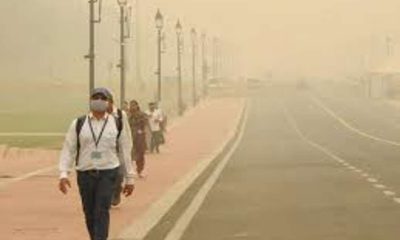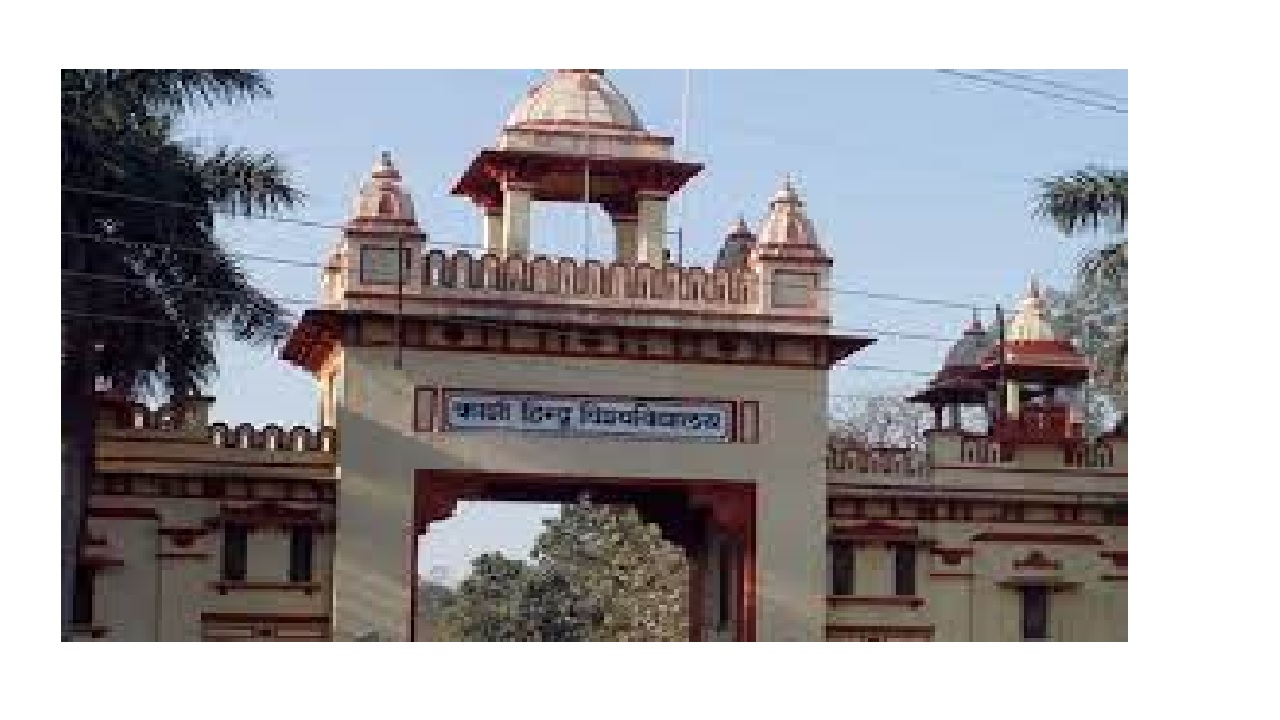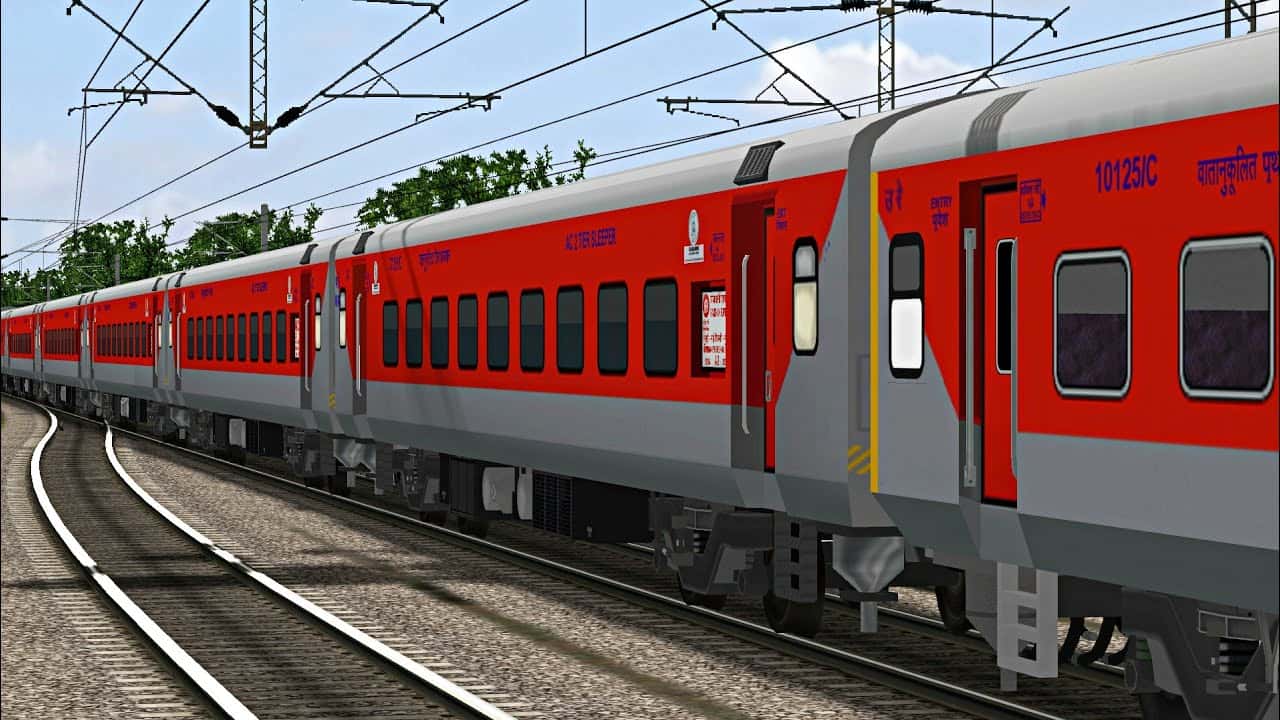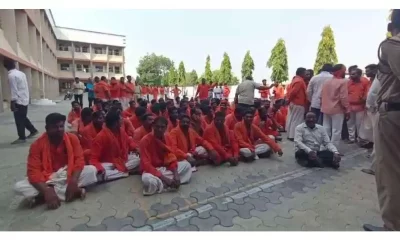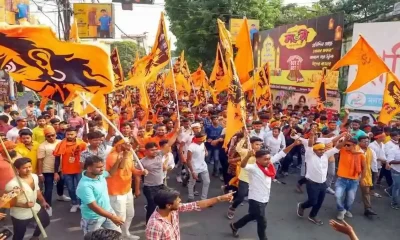Latest Science News
Deciduous trees with compound leaves more tolerant to air pollution: study
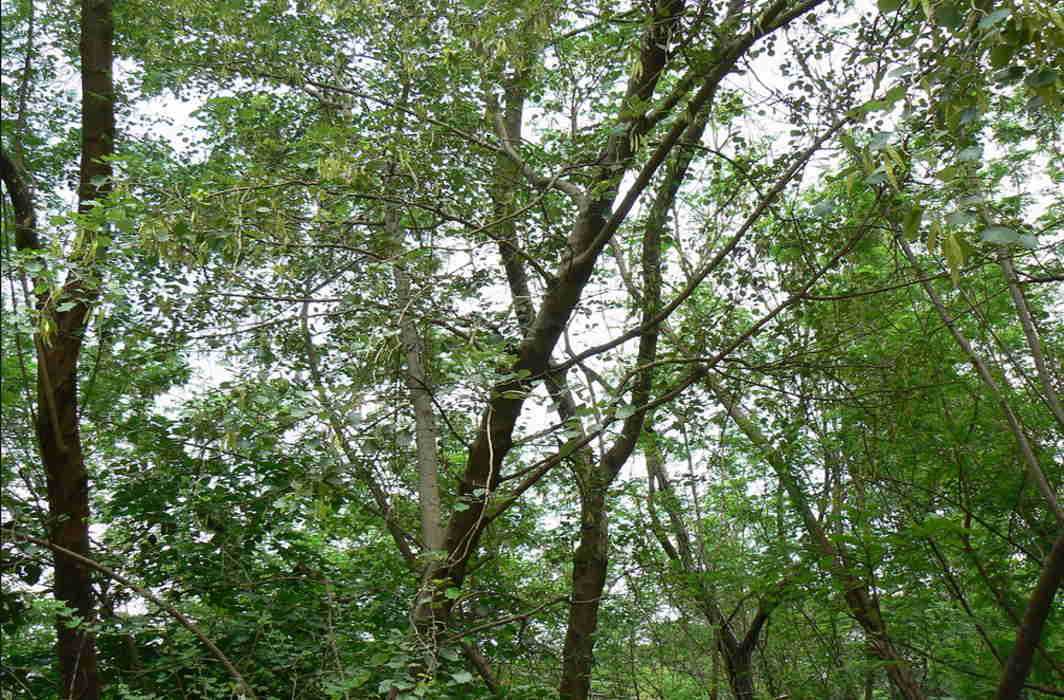
~By Dr Aditi Jain
Degrading air quality in metro cities is a matter of concern for public health. Massive tree plantation drives are often conducted in order to provide oxygen to choking cities. But trees, much like humans, are also severely affected by pollutants in the air.
In such a situation, knowledge about trees capable of withstanding heavily polluted environment is needed, particularly while designing green belts in urban areas. A new study done by researchers at the Banaras Hindu University (BHU) might help in this regard. The study has deciphered impact of air pollution on health of various trees, and identified trees hardy enough to tolerate stress induced by air pollution.
 The researchers selected three regions with a variable degree of pollution levels – residential, traffic and industrial site – in Varanasi. They found that levels of particulate (total suspended particles, Particulate Matter 10) and gaseous pollutants (nitrous oxide, sulphur dioxide, ozone) were 1.4 to 2.5 times more in the areas with traffic and the industrial site compared to the residential location. The levels of most pollutants were high during winters followed by summers and monsoon months, except ozone which was higher in summers. The study was performed for six successive seasons for two years.
The researchers selected three regions with a variable degree of pollution levels – residential, traffic and industrial site – in Varanasi. They found that levels of particulate (total suspended particles, Particulate Matter 10) and gaseous pollutants (nitrous oxide, sulphur dioxide, ozone) were 1.4 to 2.5 times more in the areas with traffic and the industrial site compared to the residential location. The levels of most pollutants were high during winters followed by summers and monsoon months, except ozone which was higher in summers. The study was performed for six successive seasons for two years.
In all, thirteen tree species that were present in all the three sites were selected to study impact of air pollution on them. Around fifteen leaf parameters such as antioxidant status, leaf water status, photosynthetic pigment etc. and tree characteristics were studied at all the sites.
The results showed that particulate matter and ozone were the most damaging to trees, causing maximum variability in their characteristics. Of all the studied trees, Caesalpinia sappan (Indian redwood) was found to be the most tolerant followed by Psidium guajava (yellow guava), Dalbergia sissoo (shisham) and Albizia lebbeck (saras). These tree species showed an increase in antioxidants, pigments and relative water status with increase in pollution load.
Tolerance and pollution response were regulated by different tree characteristics such as height, canopy size, leaf form, texture and nature of the tree. The analysis showed that deciduous trees, with compound leaves, small-to-medium canopy and round-to-oval shape are more tolerant to pollution. The scientists reasoned that as compared to simple leaves, compound leaves are less exposed to air pollutants making trees bearing such leaves more tolerant.
“Identification of relative tolerance of tree species to air pollutants with respect to their leaf functional traits and canopy characteristics could be useful in planning green belt development in cities. Our findings are also useful for urban biodiversity conservation, which will enhance ecosystem services by supporting biodiversity, improving aesthetic appearance and mitigating air pollutant’s burden to reduce human health risk,” said Dr Madhoolika Agarwal, author of the study, while speaking to India Science Wire.
The results of the study have been published in journal Ecotoxicology and Environmental Safety. The research team included Arideep Mukherjee and Madhoolika Agrawal from the Banaras Hindu University. (India Science Wire)
India News
President Droupadi Murmu launches India’s first homegrown CAR T-cell therapy for cancer treatment
The gene-based therapy, which is developed by the IIT Bombay and Tata Memorial Centre, is being rolled out in India at about one-tenth of its price outside the country.
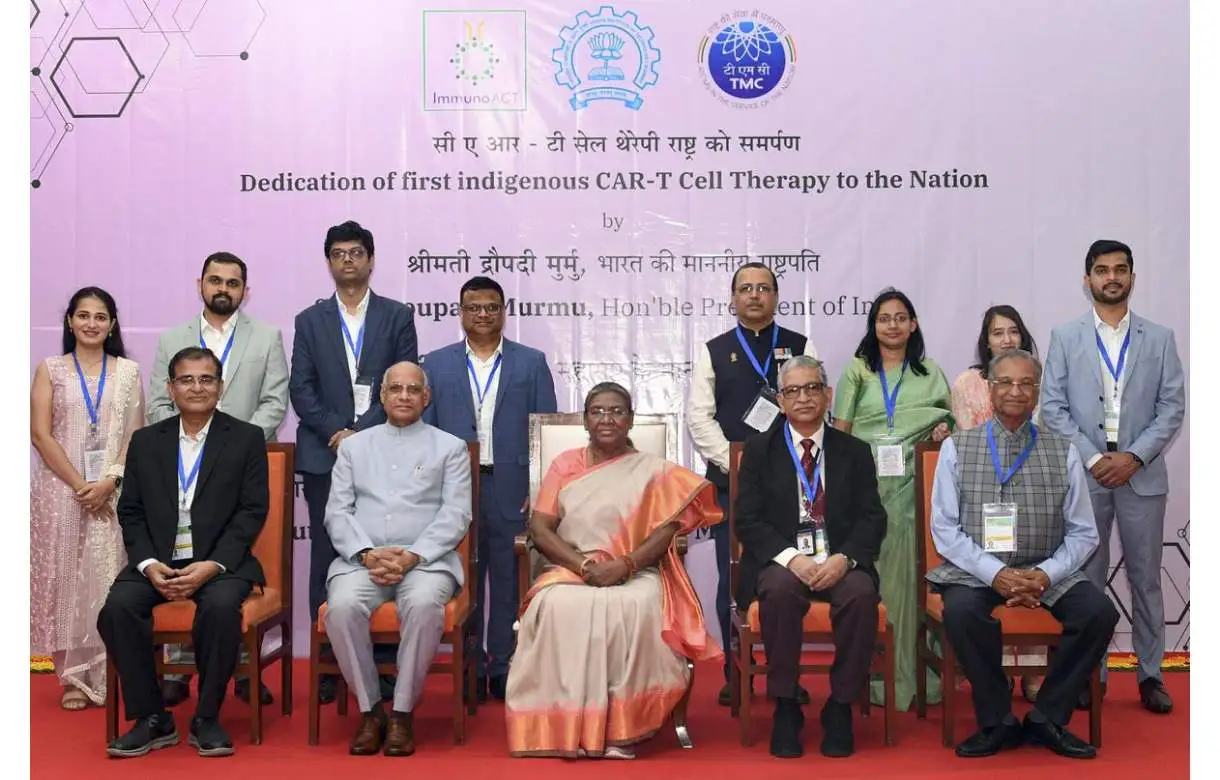
President Droupadi Murmu on Thursday launched India’s first indigenously-developed CAR T-cell therapy, a gene-based therapy, for cancer treatment, hailing it as a breakthrough that provides new hope for humankind in the battle against the diseases.
Speaking at the launch event at the Indian Institute of Technology (IIT) Bombay, Murmu said the indigenous development of the CAR T-cell therapy was an example of the Make in India initiative.
The gene-based therapy, which is developed by the IIT Bombay and Tata Memorial Centre, is being rolled out in India at about one-tenth of its price outside the country, as per the senior official.
In CAR T-cell therapy, a patient’s T-cells, which is a type of immune system cell or stem cell, are modified in the laboratory and inserted back into the patient to attack and destroy cancer cells after editing the stem cell.
The NexCAR19 CAR T-cell therapy, the country’s first Made in India CAR T-cell therapy, is expected to bring down the cost of treatment significantly.
During her speech, Murmu said that this therapy is considered a phenomenal advance in medical sciences. The development of this therapy is also an example of the Make in India initiative and speaks volumes about Indian scientists and physicians, she added.
The launch of India’s first gene therapy is a significant breakthrough in the battle against cancer. As this line of treatment, named CAR T-cell therapy, is accessible and affordable, it provides a new hope for the whole of humankind, President Murmu further added.
The Tata Memorial Centre director Sudeep Gupta said the CAR T-cell therapy was enormously expensive and out of the reach of an overwhelming majority of people.
Asserting that, he said NexCar19 needs to be custom manufactured for every patient under the most stringent conditions, but it has been rolled out at approximately one-tenth of the price at which it is available outside India.
The treatment costs approximately Rs 4 crore abroad against Rs 30 lakh in India, said IIT Bombay director Prof Subhasis Chaudhuri.
He further said that the low-cost CAR T-cell therapy was a huge achievement for the country and cancer patients, and places India firmly on the global map of cell and gene therapy.
Comparing the achievement of Chandrayaan-3 with CAR T-cell therapy, Chaudhuri asserted that CAR-T cell therapy heralds India’s entry into the cell and genetic engineering group.
The Tata Memorial Centre director Gupta said the treatment will help some 20,000 Indians every year, and its rollout is a milestone in the field of cancer care and genetic engineering.
He added the CAR T-cell was not only a scientific achievement of the highest order but also had immense practical application. NexCAR19 will save many, many lives and wipe many, many tears, he emphasised.
India News
ISRO launches weather satellite INSAT-3DS to monitor Earth’s surface, oceans
The Naughty Boy has now become a mature, obedient and disciplined boy like PSLV, and GSLV as they have become a very robust vehicle for ISRO, said Tomy Joseph.
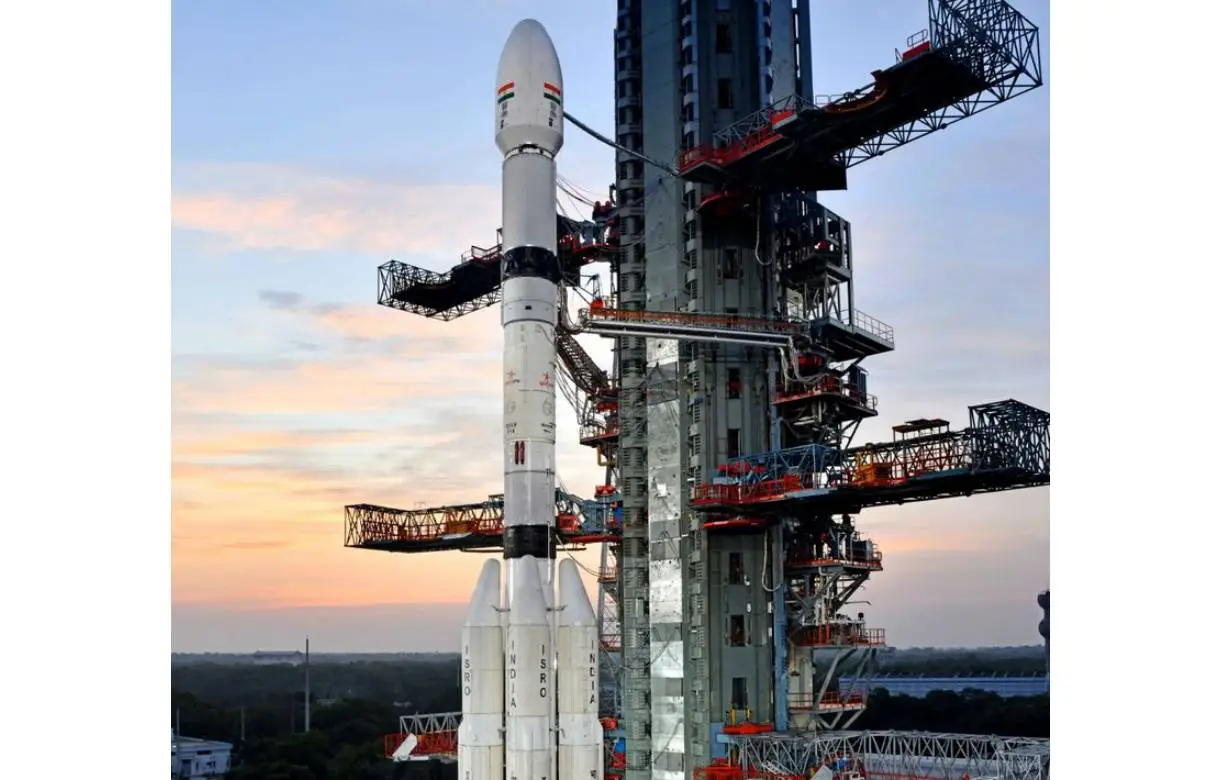
The Indian Space Research Organisation (ISRO) on Saturday launched the INSAT-3DS mission from Satish Dhawan Space Centre in Sriharikota at 5:35 pm to monitor the Earth’s surface, observe the ocean and analyse the environment through various essential meteorological perspectives.
In its mission, the Geosynchronous Satellite Launch Vehicle (GSLV) aimed to deploy the INSAT-3DS meteorological satellite into the Geosynchronous Transfer Orbit (GTO). Subsequent orbit-raising maneuvers will ensure that the satellite is positioned in a Geo-stationary Orbit.
After being positioned in GSO, it will provide information on diverse atmospheric conditions via vertical profiles. INSAT-3DS will manage data collection and dissemination from Data Collection Platforms (DCPs). The satellite will help in search and rescue services.
Congratulating the team, ISRO Chairman S Somanath expressed his happiness over the successful accomplishment of the mission GSLV-F14 INSAT-3DS. He further said that the spacecraft has been injected into a very good orbit. The space agency has also noted that the vehicle has performed very well.
The INSAT-3DS Mission Director, Tomy Joseph sarcastically remarked, saying the Naughty Boy has now become a mature, obedient and disciplined boy like PSLV, and GSLV as they have become a very robust vehicle for ISRO.
The Geosynchronous Satellite Launch Vehicle (GSLV) is a launch vehicle with a length of 51.7 meters and a liftoff mass of 420 tonnes. It consists of three stages, the first stage (GS1) is made up of a solid propellant motor with 139-ton propellant and four earth-storable propellant stages (L40) strapons. Each strapon carries 40 tons of liquid propellant.
The second stage (GS2) is also an earth-storable propellant stage that carries 40-ton propellant, and the third stage (GS3) is a cryogenic stage with a 15-ton propellant loading of liquid oxygen (LOX) and liquid hydrogen (LH2).
To protect the satellite during the atmospheric regime, it is covered by an Ogive payload fairing. The GSLV is versatile and can be used to launch various spacecraft capable of performing communications, navigation, earth resource surveys, and other proprietary missions.
The launch of INSAT-3DS was a follow-on mission of Third Generation Meteorological Satellite from Geostationary Orbit. According to ISRO, the GSLV-F14/INSAT-3DS mission has been fully funded by the Ministry of Earth Sciences (MoES) and designed for enhanced meteorological observations and monitoring of land and ocean surfaces for weather forecasting and disaster warning.
The satellite will augment the Meteorological services along with the presently operational INSAT-3D and INSAT-3DR satellites.
Notably, the services will be used by various departments of the MoES such as the India Meteorology Department (IMD), National Centre for Medium-Range Weather Forecasting (NCMRWF), Indian Institute of Tropical Meteorology (IITM), National Institute of Ocean Technology (NIOT), Indian National Center for Ocean Information Services (INCOIS) and various other agencies.
India News
PM Modi says day not far when an Indian will land on moon in indigenously built spacecraft
PM Modi said a strong roadmap has been drawn till 2040 for the space sector. He made the announcement after flagging off the first Namo Bharat train on the 17 km stretch of the Delhi-Meerut Regional Rapid Transit system.

Prime minister Narendra Modi on Friday said the government has drawn up a roadmap for the development of space sector and the day is not far when an Indian will travel to the moon in an indigenously built spacecraft. PM Modi said India’s Gaganyaan will soon take Indian astronauts to space and the India wants to establish its own space station.
PM Modi said a strong roadmap has been drawn till 2040 for the space sector. He made the announcement after flagging off the first Namo Bharat train on the 17 km stretch of the Delhi-Meerut Regional Rapid Transit system.
PM Modi recalled the success of India’s moon mission Chandrayaan3 which had recently placed the country’s tricolour on the lunar surface. He said India of the 21st century is writing new chapters of progress and development for the landing on the moon has left the world awestruck.
PM Modi added with impeccable hosting of the G20 summit, today’s India has become the centre of attraction and curiosity for the world. He said today’s India wins more than 100 medals in the Asian Games.
PM Modi added today’s India launches 5G on its own strength and takes it to all corners of India. He further added todays India does the highest number of digital transactions. He said the Namo trains that were flagged off today were all made in India.
PM Modi set goals for the Indian Space Research Organisation (ISRO) by asking engineers and scientists to work towards setting up an Indian space staion by 2035 and sending an Indian astronaut to the lunar surface by 2040. PM Modi also asked the scientists to undertake interplanetary missions like the Venus orbiter and also attempt a landing on Mars. PM Modi further added the government has handed over festival gifts by reducing the gas cylinder price by Rs 500 for Ujjwala Yojana beneficiaries.
-

 Latest world news24 hours ago
Latest world news24 hours agoDubai sky turns green during storm in UAE, video goes viral
-

 Cricket news24 hours ago
Cricket news24 hours agoKKR captain Shreyas Iyer fined Rs 12 lakh for slow over rate in match against RR
-

 2024 Lok Sabha Elections23 hours ago
2024 Lok Sabha Elections23 hours agoMamata Banerjee accuses BJP of plotting riots on Ram Navami
-

 Latest world news23 hours ago
Latest world news23 hours agoBigg Boss 14 contestant Rahul Vaidya struggles walking in knee deep water, compares Dubai rains with Mumbai floods
-

 India News21 hours ago
India News21 hours agoLamborghini Gallardo worth nearly Rs 1 crore set on fire over business dispute
-

 2024 Lok Sabha Elections20 hours ago
2024 Lok Sabha Elections20 hours agoElection Commission advises Bengal Governor to not visit Cooch Behar on voting day
-

 2024 Lok Sabha Elections21 hours ago
2024 Lok Sabha Elections21 hours ago2024 Lok Sabha elections: TMC releases manifesto, Mamata Banerjee vows to scrap CAA, stop NRC
-
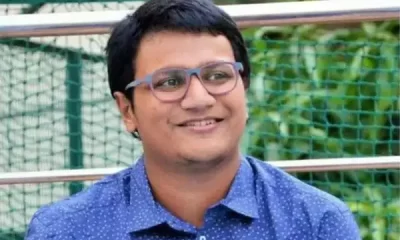
 Trending20 hours ago
Trending20 hours agoSocial media users pay tribute to viral sensation Abhradeep Saha as Angry Rantman dies at 27

